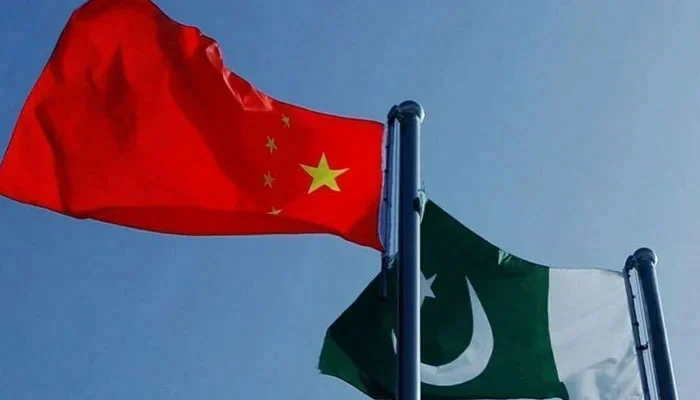WNAM REPORT: Victor Gao’s unambiguous statement on an Indian channel that China will help Pakistan protect its sovereignty against any country leaves no room for doubt regarding ironclad brotherhood and strategic partnership between Pakistan and China. This statement reinforces my belief Pakistan-China relationship cannot be comprehended through traditional international relations tools. It is a unique relationship that has stood the test of time.
Regardless of the situation, China and Pakistan have consistently stood by each other. History is replete with examples showing how China and Pakistan demonstrated they are ironclad brothers through their actions. They have always been strongly committed to protecting each other’s sovereignty and vital interests.
As a big country and brother, China remains considerate of Pakistan’s needs and assists Islamabad in ensuring its sovereignty, particularly economic and defence sovereignty. Moreover, China consistently supported Pakistan during challenging times. Numerous examples from bilateral relationships can strengthen this argument. Let’s begin with security.
Since establishing the relationship, China and Pakistan have forged a robust security and defense partnership. Cooperation in security and defence field is dynamic and diverse. The Communist Party of China (CPC) has assigned top priority to security and defense cooperation with Pakistan. The CPC has consistently guided and advised People’s Liberation Army to cultivate a strong partnership with Armed Forces of Pakistan. Under the guidance of top leadership, both forces have played a prominent role in strengthening these ties, embodying the spirit of brotherhood, mutual trust, and respect. Armed forces from both sides have developed a relationship capable of facing any challenge with grace and strength.
However, the directives of Communist Party of China (CPC) to PLA and defense machinery to assist Pakistan in modernising its defense capabilities by adhering to principle of self-sufficiency are the most distinguished characteristics of this relationship. Thus, from day one, the spirit of self-sufficiency has guided the collaboration.
There are many examples of such cooperation, but Heavy Mechanical Complex Taxila (HMCT), Al-Khalid Tank, Pakistan Aeronautical Complex, Pakistan Ordnance Factories and several maritime projects for the navy, established with Chinese assistance, are the most prominent. These programmes and production facilities have significantly helped Pakistan become self-sufficient in arms production rather than an exporter.
Besides, China is closely collaborating with Pakistan to enhance Pakistan Air Force’s capabilities and capacities to achieve self-sufficiency in this field. The joint venture to produce JF-17 jet is the most prominent example, which is significantly changing Pakistan’s air force and defense industry dynamics. The JF-17 is a modern fighter jet that has improved Pakistan’s ability to protect its airspace. It has reduced Pakistan’s dependence on Western countries, which have often sought to exploit Pakistan and compelled it to accept numerous conditions. At times, they refuse to supply jets after receiving payment (F-16). Moreover, the JF-17 has also emerged as a valuable source of foreign exchange earnings for Pakistan.
Recently, Pakistan has received orders from various countries. China has also supplied Pakistan with modern J-10 fighter jets to further bolster Pakistan Air Force. Now, both countries are discussing further upgrades to Pakistan Air Force’s capabilities by enhancing collaboration in various fields, including fifth-generation stealth fighter jets.
On the economic front, China has consistently stepped in to assist Pakistan during its most challenging times, with CPEC serving as a prime example. CPEC was launched when Pakistan faced numerous issues, including terrorism, frequent loadshedding, declining FDI, increasing debt and diminishing economic and livelihood opportunities. Loadshedding was widespread, causing industries to shut down or relocate outside Pakistan, resulting in job losses for many.
This situation incited public agitation. Besides, the loadshedding inflicted substantial financial and economic losses on the country. According to Pakistan’s Vision 2025, the nation was losing $ 4-5 billion annually. The impact on households was even more severe, directly affecting people’s livelihoods. It is also crucial to note these figures do not account for health-related costs, with many experts suggesting a rise in mental health issues in Pakistan following the energy crisis.
Pakistan was engaged in the war on terror as a frontline ally of US and Western countries. The war significantly impacted Pakistan in terms of human lives and its economy. It was estimated Pakistan lost 60,000 precious lives by 2013.
The economic cost exceeded $100 billion, which was beyond Pakistan’s capacity to bear. The war on terror deteriorated the road infrastructure as Pakistan permitted NATO, US and its allies to utilise the country as a supply route. Pakistan required $1.2 billion to rehabilitate its deteriorated transport infrastructure. Unfortunately, while they exploited the transport infrastructure, they did not contribute to its maintenance.
Social problems, such as food insecurity and poverty, further complicated the situation. It was estimated around 39 percent of Pakistan’s population was living below poverty line, but independent sources contested this. More than 58.8pc of Pakistan’s population was food insecure. The primary reasons for high poverty and food insecurity were lack of livelihood opportunities and absence of peace due to shrinking FDI and energy crisis.
Pakistan was running from pole to pole to find any investment opportunities. No one was willing to invest in Pakistan. The so-called allies in the war on terror turned a blind eye to Pakistan’s needs. They even refused to provide verbal support to attract investment. Instead, they began introducing sanctions, deploying institutions to tighten the situation, and the FATF was one of them. They also launched malicious campaigns to portray Pakistan as one of the most dangerous countries in the world, with Western media and think tanks at the forefront of this effort. This created a negative image of Pakistan and discouraged investors from investing there. They applied various pressures on Pakistan to force it to kneel down.
In this desperate situation, China stepped in to assist Pakistan. As a time-tested friend and iron brother, China refused to heed any propaganda and began collaborating with Pakistan. It signed China-Pakistan Economic Corridor (CPEC) to support Pakistan on multiple levels.
Pakistan is struggling to capitalise on the potential benefits of CPEC fully. The primary reason for this failure is Pakistan could not differentiate between bilateral relations and economic rationales. Pakistan did not apply economic rationales to execute its economic plans. Moreover, inefficiencies in the system, bureaucratic hurdles, and the attitudes of the ruling elite further complicated the situation.
We can draw following conclusions from the above discussion:
China-Pakistan ironclad brotherhood is a commitment, not a slogan. China always helped Pakistan in difficult times, such as 1965 and 1971 wars and vice versa. China has never tried to create dependency; rather, it always helps Pakistan achieve self-sufficiency. CPEC and defence cooperation are prime examples.
The Pakistan-China relationship cannot be compared to Pakistan’s relationship with any other country. The debate of balancing Pakistan-China relationship with any other country (Western, Muslim Countries, etc.) has no logic, because no one has shown, even verbally, intentions to support Pakistan in all weathers. China has done so practically. Thus, the debate must stop here.


